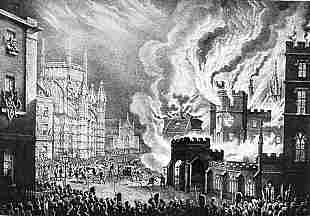



If you are looking at this page without frames, there is more information about medieval writing to be found by going to the home page (framed) or the site map (no frames).
| Exchequer Records | |
| The increasing bureaucratic complexity of the English royal administration over the course of the middle ages is demonstrated not only by the records of the Chancery, but by those of the Exchequer. Like the Chancery, the financial arm of the bureaucracy originated in the royal household, and according to legend, at the time of Edward the Confessor, the treasury was a box under the king's bed. During the 12th century a whole department developed, which by the time of Henry II had its own copy of the great seal and a head, the Treasurer, who, like the Chancellor, was a learned senior ecclesiastic, clericus and litteratus. | |
 |
|
| Receiving and weighing coins at the Exchequer, after a 12th century illustration. | |
| Concise descriptions of the Exchequer and its records can be found in Galbraith 1952 and Elton 1969. | |
| A 12th century document, The Dialogue Concerning the Exchequer, written in 1179 by the Treasurer, Richard Fitz Nigel, gives a contemporary account of how the Exchequer worked at that time. It is written in a truly medieval style, as a question and answer session between a master and student. It begins with a fascinating description as to how it received its name from a rectangular board covered with a chequered cloth like a chessboard, on which counters were used for reckoning. The chess analogy is taken further as the process becomes a contest between the Treasurer and the sheriff as to what is owing, with other officials present to keep watch, their roles constrained like those of chess pieces to their particular parts. They don't write stuff like that in the tax office any more! | |
| An English translation of The Dialogue Concerning the Exchequer has been put on the web by the Avalon Project, Yale Law School. It is taken from Stubbs' Charters, and is full of annoying anachronistic language like "thou knowest", but I guess it is out of copyright. | |
| It also tells us that at that time the Exchequer consisted of two departments, as it continued to do throughout the middle ages. The Lower Exchequer, or Exchequer of Receipt, was where they actually handled the money. The Upper Exchequer, of Exchequer of Account, was the auditing department, which was staffed by literate clerics. The Lower Exchequer was originally run by lay chamberlains, and had a unique method of recording the monies returned to it by the sheriffs. Tally sticks were thin wooden sticks carved with notches which provided a coded representation of the amount of money paid over. The stick was split lengthwise and the Exchequer retained one half as a record, while the sheriff retained the other as a receipt. | |
 |
|
| Tally for £11 18s 8d from the reign of Henry III to the Reeve of Ledicumbe. | |
 |
|
| A tally for 6s 8d issued by the Treasurer of Edward I to the Sheriff of Lincolnshire. | |
| Despite the fact that thousands upon thousands of these unusual forms of written communication were issued, there are not many left in the wild, due to a circumstance which had a profound effect on our present vision of English government. In 1834 the boilers of the heating system of the somewhat decrepit Palace of Westminster were stoked with a great pile of old tally sticks which were cluttering up the place. The fire escaped and the historic old palace was burned and its buildings largely destroyed. What was built in their place was the new Houses of Parliament, so familar to us as an icon of government. The chimes of Big Ben arose from the ashes of a quaint system of bookkeeping, largely inefficient for archival purposes. | |
 |
The loss of financial records, actually labelled "The Destruction of the Houses of Lords and Commons by Fire on the 16th October, 1834. Drawn on the stone by William Heath, from a sketch taken by him by the light of the flames". |
| This is all a digression, and the tally sticks were not actually the archiving system, but a method of recording the ongoing transactions. Heaven knows why they actually kept the things for centuries. The Exchequer actually developed an increasingly elaborate set of written records as the agency itself evolved into various departments over the course of the centuries. As with the Chancery, the records were kept on rolls, but rather than very long narrow rolls, these were sets of shorter rolls joined at the top. | |
|
|
|
|
If you are looking at this page without frames, there is more information about medieval writing to be found by going to the home page (framed) or the site map (no frames). |
|